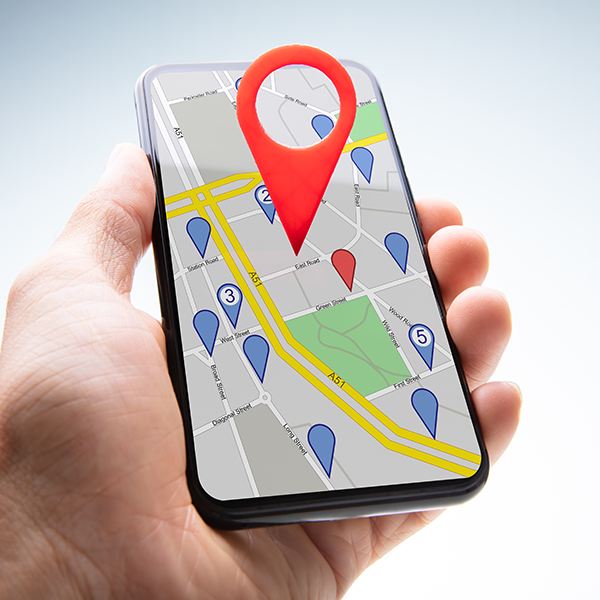Solving the Mysteries of Mobile Marketing

The explosion of smartphones and tablet devices is challenging Web marketers who are tasked with effectively translating user experience (UX) from the desktop to mobile applications and mobile websites.
For developers, the challenge is equally difficult. Simply sizing down an existing website to work in a mobile environment isn't a mobile strategy. Desktop websites are designed for desktop users -and mobile users have different needs.
Resizing a website for mobile use can alienate users. Even worse, it opens the door for competitors to take market share by leveraging the value that mobility offers with a better user experience.
It's critical to get UX right. Whether it's an application or a mobile website, mobile services can offer a serious boost to brand penetration and ecommerce. Each sets the stage to help increase competitiveness, customer loyalty, quality analytics and targeted promotions.
It's not just about knowing what you can do; it's about understanding what you should do to make an exceptional user experience. Great experiences define the perception of your business, and early investments in quality UX can improve productivity, reduce costs and increase sales in the long run. The ROI on UX is undisputable.
To ensure the most effective user experience, marketers and UX designers need to work together. But marketing executives often overlook key ways to provide insight and direction to UX designers for defining the right user experience. Three considerations for guiding UX are at the top of the list:
- Are business objectives clearly defined? Speed-to-market is important, but it is equally important to set the business objectives and mobile strategy before development begins. This will save time and money in the long run.
- How important is ecommerce to your business? Shoppers typically use applications for purchases because it's easier to make purchases with a mobile application than on a mobile website.
- Is there adequate investment in discovery and UX design? Without it, ROI and competitive edge could be at risk.
It's also important to take time to learn what mobile buyers want. Early investments in a high-quality UX can often make or break the mobile effort. Marketing executives should work with their Web development teams to answer basic questions before starting the development of a mobile experience.
- What is the demographic breakdown of your customer base?
- How can UX be used to distinguish your brand from competitors?
- What do potential customers want to achieve when mobile?
- What mobile features must be included to establish brand loyalty?
- What is the customers' ideal workflow? How will they navigate through the experience?
- What is your plan for online data? How can you use analytics to improve your business?
Once the basics are understood, the work of UX design can begin.
Design for the Experience
Websites and applications are used in inherently different ways. Consider how content is used in each environment. A traditional website content model does not apply to mobile user experience design because mobile users are different than desktop users. The goal is to create a great a mobile experience.
Early mobile efforts often miniaturized the Web experience for mobile, but brands often can't make the full breadth of their Web content easily viewed on mobile devices. Mobile websites and applications need to offer content that is relevant to a user on-the-go with great functionality and features. If a content-rich experience is needed, a smart mobile strategy is to simply drive users to a desktop website for more in-depth content.
Solve Interaction Mechanism Riddles
Solving interaction mechanism riddles begins with answering the right questions.
- How will you adapt your design for natural user interface and touch navigation on a smartphone?
- Are there features and capabilities in a smartphone that could be applied to your mobile experience, such as voice recognition, cameras, and back buttons?
There are a number of ways to craft a UX that takes advantage of the unique characteristics of a smartphone, and there's no one recipe for success. It's critical to consider the device and the interactions between the application and the hardware when designing a successful UX.
App or Mobile Website?
Although mobile applications and websites are delivered on the same devices, they aren't the same. The marketing world is abuzz with the proliferation of mobile apps, but it's important to be aware that a brand can give its customers a great mobile experience with a mobile website, too.
Although there has been a spike in applications in the market, the fact is that users visit mobile websites more than they download applications. There are important considerations when deciding whether you need a mobile website or application.
As a marketer, it's important to avoid the hype and temptation to build a mobile app for your brand without also considering the advantages of a mobile website. Here are some critical issues to help in making the right decision for your brand:
Advantages of a mobile website:
- Runs on any mobile browser
- Updates appear on users' devices automatically
- Available to all Web-enabled devices and platforms
- No approval required by a third party
- More people use the mobile Web than use apps
- HTML5 and CSS3 will make available many of the cool features of apps such as geolocation, offline Web app support, gesture support and the ability to access video and audio.
- A well-built mobile website can be supported across multiple platforms, saving development costs.
Advantages of a mobile application:
- Users spend more time with an individual app compared with the browser, and they return more often once the app is installed.
- Premier placement in the app marketplace will lead customers to your app.
- The user interface is designed for the platform and form factor on which it will be used.
- Can use native phone functionality, such as the camera, gyroscope, offline usage, location/GPS, push notifications and voice recognition
- Ecommerce considerations: It's easier to bill back to a central marketplace, like iTunes, with mobile applications.
Get in the Mobile Game
More users are going mobile with smartphones every day, and the demand for untethered access to brand content shows no signs of slowing.
Just as mobile services can uplift brands, sales figures and competitiveness, poorly executed user experiences can erode brand loyalty and result in lost revenue.
"The best advice I can give a company that wants to launch a mobile offering," says Andrew Martin, vice president of global digital marketing agency Metia, "is to fully integrate the mobile plan of attack into the overall marketing strategy. It's Marketing 101 - know your users and how to serve them."
The most important consideration is the experience you're creating for your customer. Is the purpose to make it easier to transact business? To share your marketing message? To gain exposure for your brand? To support your customer? If you don't have a world-class experience on your mobile website, start there. If you do, look for ways to improve it, or consider investing in a custom application.
About the Author: Cassandra St. Louis is the creative director for Metia/Seattle, where she leads a team of designers and user experience developers. She is an expert in mobile application UX, gaming, user interface and visual design. Metia/Seattle is the North American headquarters of global agency Metia Group, with headquarters in London and offices in New York and Singapore.

Subscribe to Our Newsletter!
Latest in Mobile Marketing










